Two months into GSoC, I must say that this summer is the best in my life. I have learned a great deal of programming, went jogging every day and had fun overall in my vacation.
If you followed my blog posts, you already know that before the actual start of the GSoC coding period, to better familiarize myself with the programming languages GCompris uses and also to prove my commitment and dedication, I contributed to GCompris by solving various bugs and developing two activities. “PhotoHunter” is an activity ported from the previous GTK version of GCompris. Its goal is finding differences between two similar images.
The second activity is “Share”, an authentic creation of mine. In this activity, the user is presented with a problem about a child who has some candies and wants to equally share them with his friends. The user has to drag the exact amount of candies from the left panel to the child friends’ areas on the main screen.
Now for the GSoC part of my work, I am happy to announce that “Crane” is already merged, and “Alphabetical Order” is coming fast from behind – everything is finished, but it needs some more testing.
Crane
In this post I will just mention the updates brought to Crane. For a more detailed presentation on the functionality of Crane, please check my previous posts.
For adding a pedagogical side to this activity, I decided to use as starter levels some easy words consisting of image letters connected one to the other. The user’s goal is to reproduce the model and by doing so he automatically learns new words.
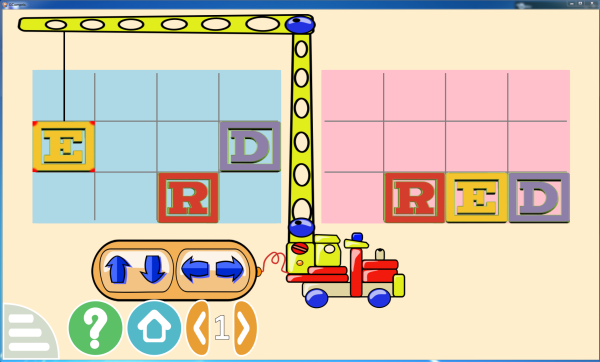
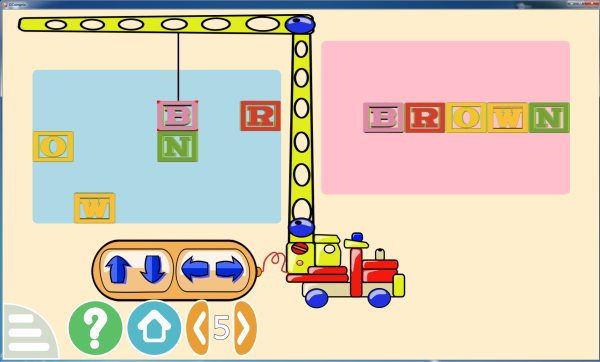
To better teach the association between the two models, the levels are carefully designed to gradually increase the difficulty: for the first levels, the two boards are at the same height and the grid is displayed, then for some levels, the grid is removed, for others, the height of the two boards is changed, and at the end, both changes are made: the grid is removed and the heights differ.
At last, there are levels with small images that the user must match. As the levels increase, there are more and more images on the board, making it more difficult to match.
Alphabetical Order:
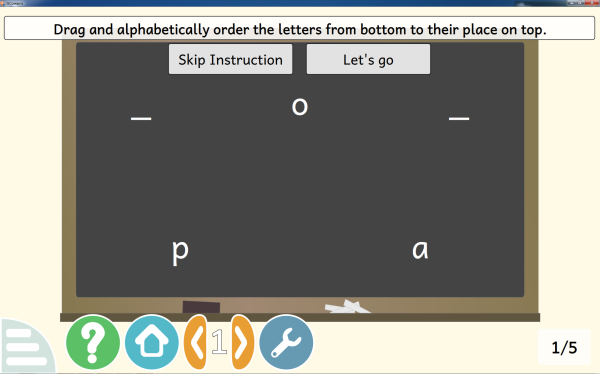
The second activity on my list for Google Summer of Code was “Alphabetical Order” – an educational game in which the user learns the alphabet by practice. Its goal is to arrange some letters in their alphabetical order: on top of the screen is the main area, where some letters are displayed from which some are missing. The user has to drag the missing letters from the bottom part of the screen to their right place in the top area.
As the difficulty increases, the levels become more and more complicated:
- more letters,
- more missing letters,
- the letters from top are not always in the good order.
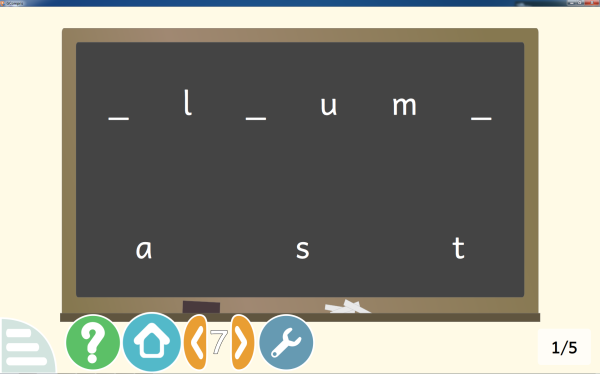
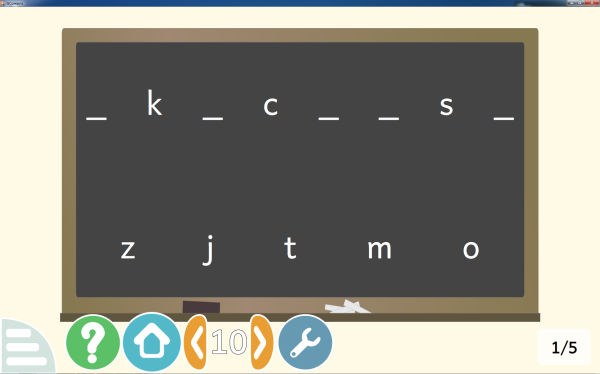
Pressing on any letter triggers a sound and the letter is read so the user (children) learns its spelling as well. In the configuration panel, these sounds can be turned on or off, by pressing one button. The language used by the activity can be changed in the same configuration panel.
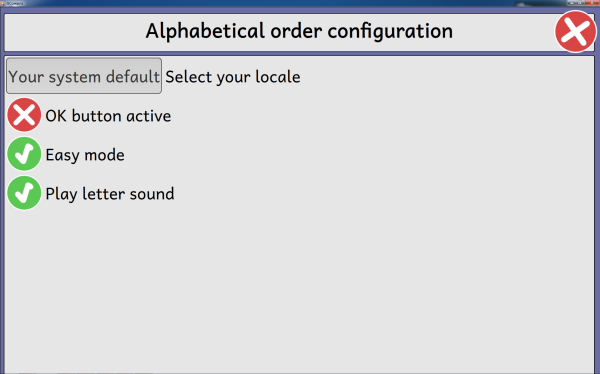
Here we can find two more buttons: “Easy mode” and “Ok button”.
In “Easy mode”, when the user drags a letter to its place, if the answer is correct, a sparkle is triggered. If the answer is wrong, the letter will turn red for a few seconds.
If the “Ok button” is activated, the level will be passed only when the user presses the “Ok button”. If the answer is good, a sparkling effect will appear on all the letters, else, the wrong letters will glow red.
If the user’s answers are mostly correct for the first level, an adaptive algorithm will increase the difficulty and as he passes more and more levels, the algorithm will dictate the difficulty of the game. On the other hand, if his answers are mostly incorrect, the difficulty is lowered so he can better learn the alphabet with easier levels.
PhotoHunter
After finishing “Crane” and “Alphabetical Order”, I went back to “PhotoHunter” and “Share”: for the first one, I added a new feature – a Help Button. Pressing it once will move the two pictures to the center, one on top of the other one. A sliding bar will appear and as the user drags it to right, the two images will combine and reveal the differences. In this “Help Mode”, the user cannot press on the differences; he has to press the “Help Button” to exit the “Help Mode” so the images will go to their initial positions and then press on the difference again in order for it to be counted.
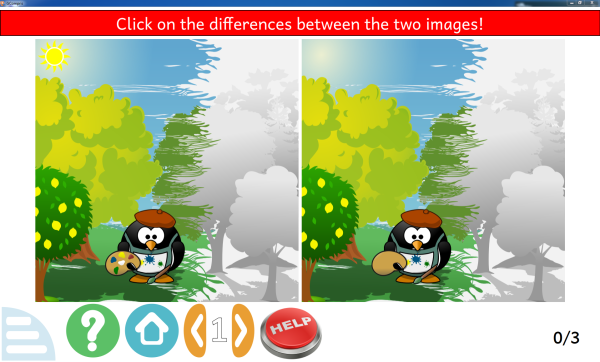
This is how the slider bar works:
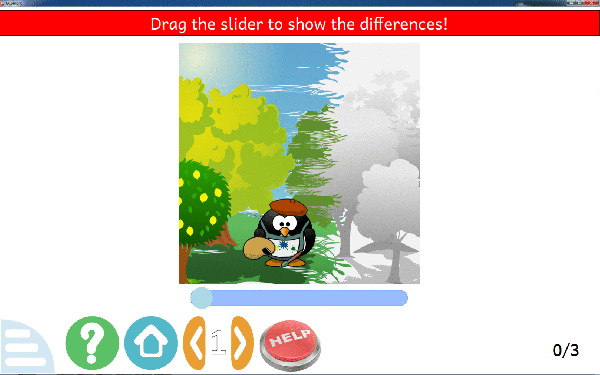
A portrait view:
Share:
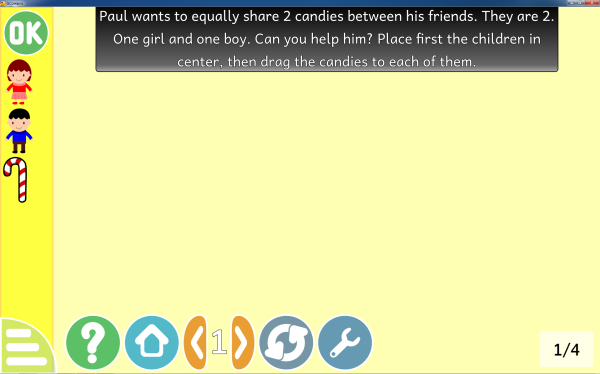
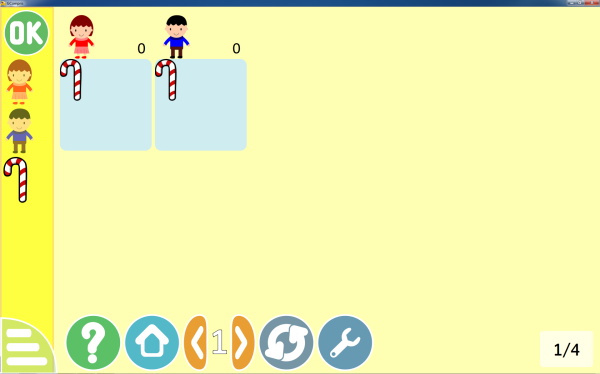
For “Share”, I added a new type of levels and a new feature: “Easy mode”. In “Easy mode”, the user can use the maximum number of candies given in the problem. If he gives more candies to a friend on the board, then he won’t have enough left for the others. On the other hand, if the “easy mode” is deactivated, the user can drag more than the exact amount of candies to each friend on the board needs. This addition forces the user solve the given problem and find its answer instead of guessing it by dragging the candies from one child to another.
Problem:
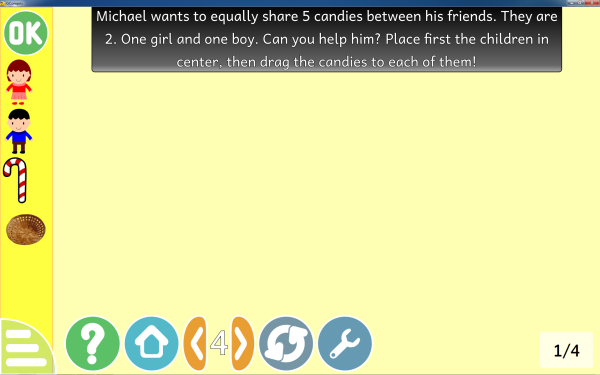
Solution:
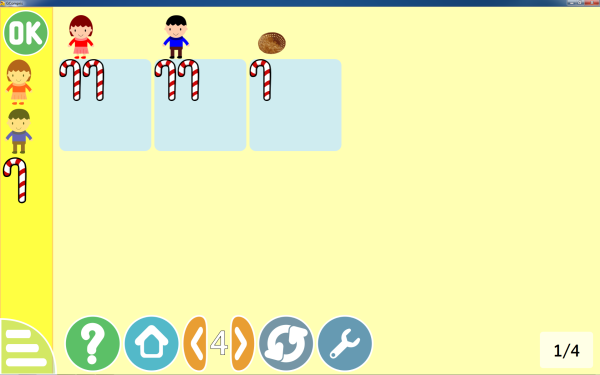
The new levels consist of placing candies in some friends’ areas before the user starts playing. This feature makes him take in consideration the candies already added to the board and compute again to find the new solution.
I am currently working on porting TuxPaint, a paint activity in which children can have fun drawing lines, rectangles and circles or free-drawing their own creation. The next post will mainly cover the development of TuxPaint.



